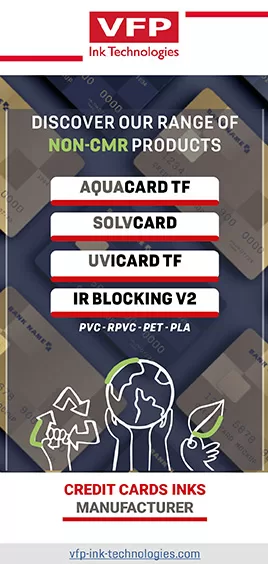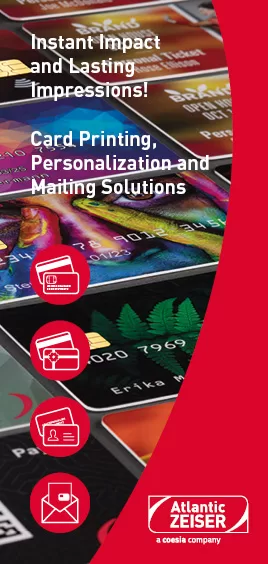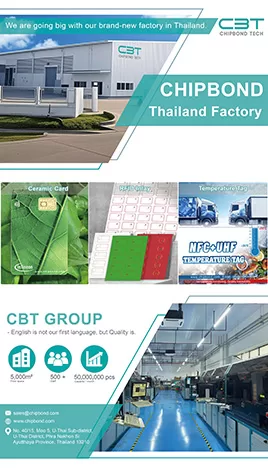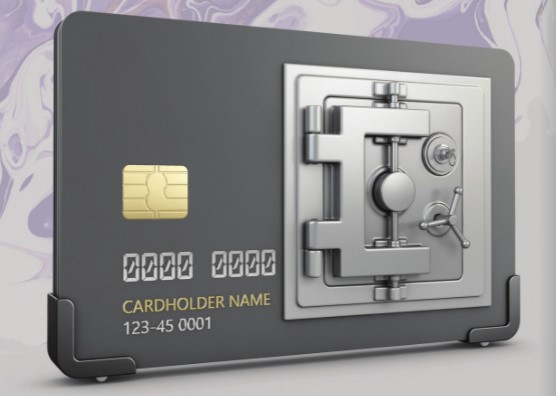
by Jennifer Kohlhepp | CM Magazine Featured
Security Printing Elements Help Assure Authenticity of Issued Cards
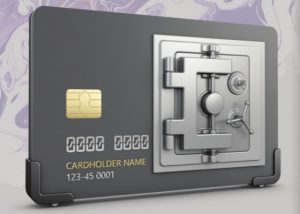 by Dave Tushie, Magellan Consulting, Inc., ICMA Standards and Technical Representative
by Dave Tushie, Magellan Consulting, Inc., ICMA Standards and Technical Representative
While much of what is making news recently in the card industry concerns stronger cardholder authentication, often overlooked has been the increasing options in security printing elements that help authenticate the credential itself. Both card authentication and cardholder authentication are essential in secure applications while card authentication is desirable in many non-secure applications as well.
Counterfeit card production has been with the industry almost as long as the cards themselves. Every year brings new sophistication in application of technologies to illicitly duplicate authentic cards. Consequently, the industry has developed a multi-layered approach to security elements wherein multiple security elements are integrated into a card body.
Some of these security elements are overt, meaning they are easily detected by visual inspection, with the naked eye or simple tools like a magnifying glass or black light. Other elements are covert and require both knowledge of the nature of the security element and tools to detect their presence in an authentic document. Security inks now fall into both categories.
In the overt category, color shifting inks with optical variability, iridescent inks and a variety of offset inks are mainstays. Some recently introduced products of hot-stamped, color-shifting elements are an alternative to hot-stamped holograms.
Offset printing has used color shifting inks in a wide range of applications in both secure and non-secure cards. Financial bank cards, gift cards and a wide range of government, identity and membership cards all use this security element as a basic overt feature. The inks are developed specifically for offset printing and card lamination processes. For more secure cards, this element provides a base for more covert security elements that are layered with it.
Iridescent inks have a bright luster with a pearlescent effect. It is easily recognizable by the human eye and cannot be duplicated by digital printing technologies, including color copiers. Often other security elements are layered with these inks.
The hot-stamp image using a color-shifting ink layer adds a new overt security feature that is an alternative to hot-stamped holograms. This may be particularly attractive to card manufacturers who lack the technical capability to employ color-shifting inks. Custom dies are also offered. For additional security, optical taggants are an option in some implementations, providing a covert element as well.
In the covert category, UV fluorescent inks, color-shifting inks under polarized light and optical taggants are basic security ink layers.
UV fluorescent inks are available in both visible and invisible varieties. Visible fluorescent inks utilize all three primary colors (RGB print process) to provide a full-color image when exposed to UV light of a single wavelength. Invisible fluorescent inks come in two varieties: single and dual UV fluorescents. The single UV fluorescents emit a color when exposed to a single UV wavelength. The dual UV fluorescents emit one color under a short wavelength UV light and another color under a long wavelength UV light.
Color-shifting inks using polarized light require such a light filter to see the shifting color rather than a tilting of the card body using ambient light.
Optical taggants are a covert security element that can be printed in a variety of inks. Customized images are available. These features are highly reflective and readily identified using relatively low powered microscopes.
These, and other, security printing elements are being deployed to help assure issued cards are authentic. Strong card authentication is becoming more important in tandem with the industry becoming more adamant about strong cardholder authentication. Security inks are a foundational step in accomplishing that objective.
About the Author: David Tushie, ICMA standards and technical representative, has had a long and continuing career in the card industry, working for international companies such as DataCard, UbiQ and NBS Technologies. He has master’s degrees in engineering and business, holds U.S. and international patents in measurement and card issuance systems and has had several years of involvement with the ANSI, INCITS and ISO Standards process. ICMA is represented at six ISO and ANSI Standards Meetings through Tushie’s standards role within the association.

